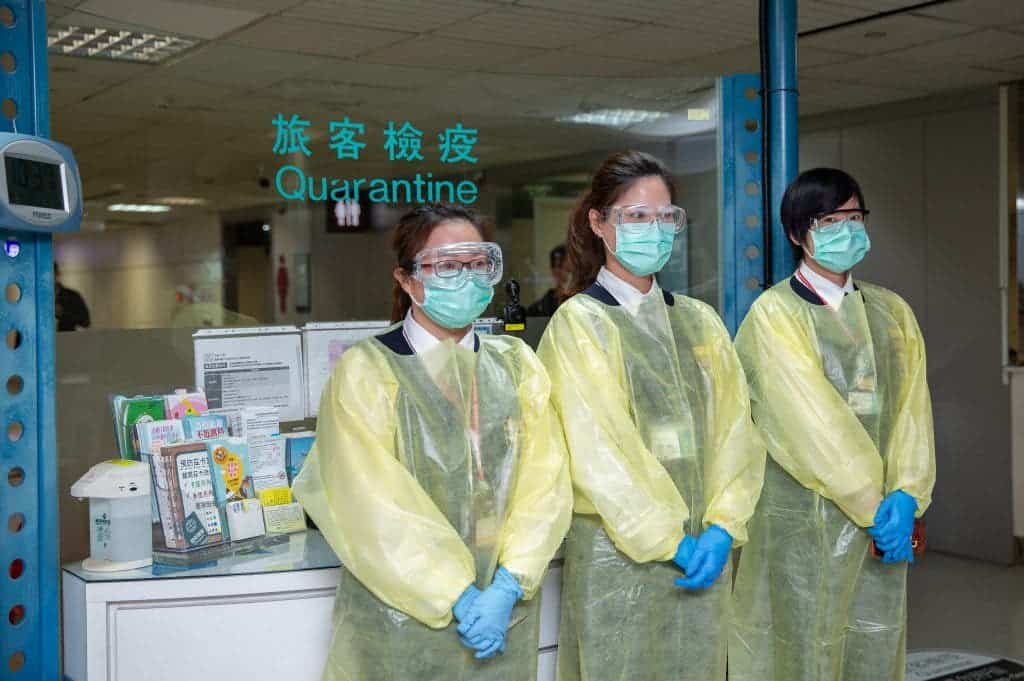Three researchers at a laboratory in Wuhan, China, apparently became sick with COVID-19 symptoms in November 2019 and sought hospital care, a US intelligence report found. Already rejected by the head of the lab and by Chinese authorities, the findings could still fuel further debate about the origin of the coronavirus pandemic.

First disclosed by The Wall Street Journal, the report was published by the State Department in January during the final days of the Trump administration. It said researchers at China’s Wuhan Institute of Virology, which studies pathogens, became sick in 2019 “with symptoms consistent with Covid-19 and common seasonal illness.”
The officials quoted by the US newspaper had different views about the strength of the supporting evidence for the report and didn’t know what the researchers were actually sick with. One person said the information came from an international partner and was significant but it needed further investigation and additional collaboration.
Yuan Zhiming, director of the Wuhan National Biosafety Lab, which is part of the Wuhan Institute of Virology, told Global Times that the report “is a complete lie” and that the claims are “groundless.” Meanwhile, Zhao Lijian, a spokesman for China’s Foreign Ministry, accused the US government of “hyping up the lab leak theory.”
Epidemiologists and virologists believe SARS-CoV-2, the virus behind the pandemic, first began circulating around the central Chinese city of Wuhan in November 2019, with China saying that the first confirmed case was a man who fell ill on December. China has repeatedly rejected that the virus escaped from one of its laboratories.
A major investigation by the World Health Organization (WHO) found in March that the pandemic probably emerged from markets in China that sold animals both dead and alive, describing as very unlikely the possibility of the virus escaping from a laboratory. Still, the findings aren’t conclusive and the WHO keeps all options open, although it did mention that the likelihood of the virus escaping from the lab is very low.
Over 30 scientists from around the world participated in the investigation by traveling to Wuhan, where the pandemic started, and collecting data. They largely focused on the COVID-19 cases that happened in December 2019 and January 2020. Two-thirds of those who had symptoms in December had been exposed to animals, the researchers found.
The WHO team visited the laboratory in Wuhan and were told by the scientists that none in the lab had antibodies against SARS-CoV-2 – dismissing the possibility of someone there having been infected in an experiment. The researchers at the lab also said they hadn’t kept any live virus strains similar to SARS-CoV-2 and said everyone in the team had safety training.
While comprehensive, the report also had significant limitations as China refused to provide raw data on early COVID-19 cases to the WHO team. They had requested data on 174 cases that China had identified from the early phase of the outbreak in Wuhan in December 2019, as well as other cases, but were only provided with a summary, not the actual data.
WHO Director-General Tedros Adhanom Ghebreyesus said the researchers “expressed the difficulties they encountered in accessing raw data,” expecting that future collaborative studies can include “more timely and comprehensive data sharing.” He said the report wasn’t “extensive enough” and that further studies will be needed.
A spokeswoman for the National Security Council told The Wall Street Journal that the Biden administration still had questions on the origin of the virus and those plausible theories should be investigated. “We’re not going to make pronouncements that prejudge an ongoing WHO study into the source of SARS-CoV-2,” the spokeswoman said.
Earlier this month, a group of UK and US scientists called for more investigation to determine the origin of the pandemic. In a letter published in the journal Science, they said knowing how Covid-19 emerged is critical for informing global strategies to mitigate the risk of future outbreaks. All hypotheses must be taken seriously until there is sufficient data, they said.
Ultimately, without a “smoking gun” evidence showing exactly where the virus came from, it will be hard to put such theories to bed. But there is no guarantee that researchers will be successful in finding this missing evidence link.


